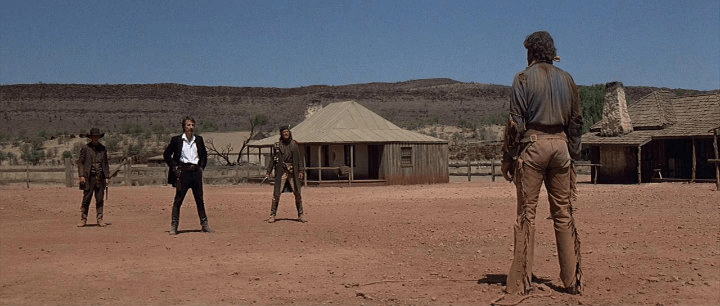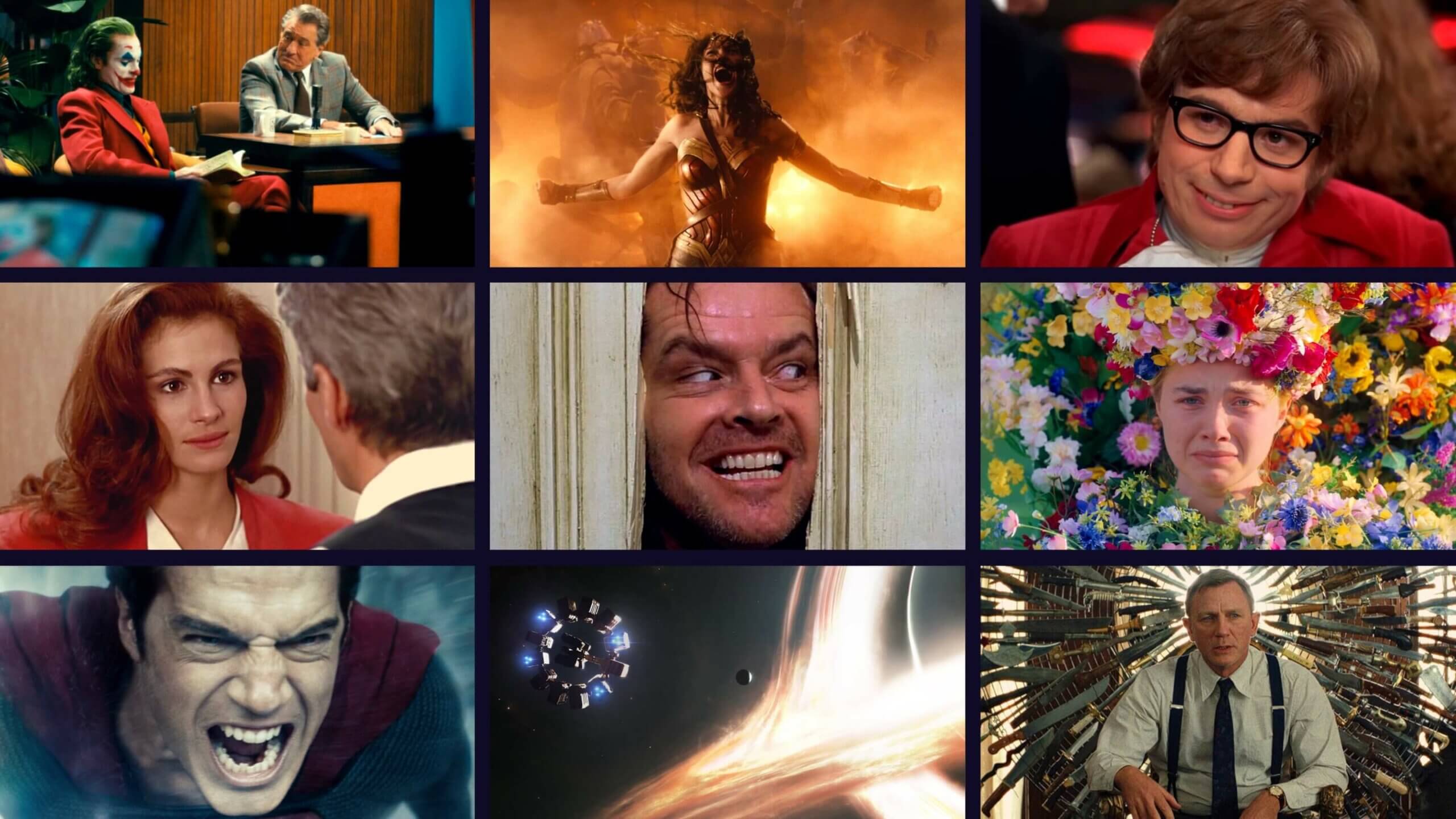Have you ever watched a film that had some level of predictability, but despite this kept you engaged and entertained up until the credits rolled? Odds are the filmmaker behind the movie had a solid understanding of the genre. Most movie-goers have a basic understanding of popular movie genres such as comedy, romance, and dramas. But to be a filmmaker in addition to being a film fanatic, it’s important to understand the components that define a film’s genre.
What is Genre in Film?
First, let’s define genre
There are literally dozens and dozens of movie genres. And each of them have aspects that define them as a genre or subgenre. Before we dive into those, it’s important that we first get a solid understanding of the genre definition.
GENRE DEFINITION
What is genre in film?
Movie genres are stylistic categories that organize films based on criteria such as the setting, characters, plot, mood, tone, and theme. A film's main genre category will be based on where the majority of the content lands. A sub-genre is a smaller category that fits inside a particular genre. Often this is a mixture of two separate genres, which known as hybrid genres. Genres and subgenres change over time and are informed by one another.
What is genre defined by?
- Setting
- Characters
- Plot
- Theme
Genre Characteristics
Setting
One of the more significant determining factors to a genre is setting. Setting is ultimately the time and place of a story. Setting is either outwardly articulated to us, or discretely suggested to us. It can be suggested by weather, clothing, culture, architecture, etc.
For example, if you close your eyes and envision an empty, dusty landscape with a saloon and a few stables, what genre does your mind immediately jump to? Odds are it’s a Western.

What does genre mean in the Old West? • Quigley Down Under
If you envision space with a shuttle floating through it while planets gaze behind it, you might immediately think of science fiction. For more setting examples, don't forget to check out our blog post.
Setting can even be a character within a film that affects how we experience the story. This video by Now You See It dives into the importance of setting in storytelling and how setting can be an extension of a genre.
Settings are Characters, Too • Genre conventions
Setting is an important aspect of how a film might fall into a specific genre. A lack of intention with setting in a film can weaken a story and the audience’s experience of the film. This is why an entire department is dedicated to fleshing out the details of a story’s setting — the art department.
The art department is in charge of the production design of a film which directly affects the setting. Check out our video on production design to better understand what facets of filmmaking fall under this umbrella and how it impacts the construction of a film’s setting.
Production Design Genre Characteristics • Subscribe on YouTube
Just like setting can determine a movie’s genre, so can those who inhabit the setting — the film’s characters.
What is Genre Determined By?
Characters
Even with a story, plot, and setting locked in, a film needs characters to execute the experience. Character tropes or stock characters are typically a tell-tale sign of a film’s genre — not only physical characteristics, but internal characteristics as well. A character’s traits, desires, behavior, or personality may lend itself to a specific genre.
For example, in the crime genre, audiences have grown to love the anti-hero. An anti-hero is a narrative protagonist who is defined by their own self-interest and who generally lacks the qualities we expect from a hero.
Anti-Heroes: What Makes Them Different?
A character that is an anti-hero works incredibly well within the crime genre because they will ultimately have to make a choice between their own self-interest or the greater good, which is a story everyone loves.
Try thinking about the romance genre. Odds are there are a few tropes that come to mind. Perhaps the manic pixie dream girl, the bad boy, or the heartbroken are all types of characters that we see all the time.
There are numerous factors of a character that will lend itself to different genres. This may be what motivates them, the principles they abide by, or simply their age.
Characters alone, of course, do not define a film’s category. They largely must fall within a specific type of plot (more or less) to really fall into a film genre.
Related Posts
Genre Conventions in Film
Plot
A plot refers to the main events in a story composed as a connected sequence of events. This is the execution of the chain of events that happen in a story.
While there are overarching plot structures that transcend categories such as the three act structure or the Hero’s Journey, how these structures are executed within the plot is what can determine the film’s genre.
For example, let’s take a look at our Save the Cat beat sheet breakdown of Interstellar. In this video, we analyze how the film’s plot utilized popular plot structure, but utilized big science-fiction ideas to dial in the familiarity while avoiding cliches.
What is genre defined by? • Subscribe on YouTube
To recap, while Interstellar can neatly be broken down into the Save the Cat 15-beat structure, the execution of these plot points is what makes it a science-fiction film. For example, the rising action becomes more sci-fi like when the stakes are raised to epic proportions, a common aspect of science-fiction.
Another way to look at this is how two films can both follow a traditional three act structure. How these films differ is determined by how specific aspects are executed such as the rising action.

Interstellar Beat Sheet
Say Film #1’s rising action involves two characters going on a road trip together and slowly falling in love.
Film #2’s rising action consists of a jewelry thief putting together a team for the ultimate heist.
Both film’s abide by this plot structure, but the execution of the structure is what makes one a romance and the other a crime film. The execution of a film’s plot will rely heavily on the story’s backbone — the theme.
Related Posts
Genre Characteristics in Film
Theme
Every good film has a central topic or message within the story. This is the film’s theme. A theme is often called the backbone of a story because it is essentially what the audience will walk away with once the credits roll.
Different film genres often cover the same themes. This in and of itself is not inherently bad storytelling as long as the film avoids consistent cliche. For example, romances typically have themes focused on love, science fiction may work with themes centered hubris, and action films may deal with themes around vengeance.
In this video, we looked at Logan, one of the best Neo-Westerns and how it's characters, setting and themes all work together.
Theme in Neo-Westerns • Subscribe on YouTube
When writing your own story or screenplay, it pays to understand the genre conventions. While a poor genre film can undoubtedly be cliche, a great one film can be a classic. Genre is a way for screenwriters to communicate with an audience as a story progresses. Ultimately it gives audiences expectations that filmmakers can fulfill or subvert, both of which are opportunities for great storytelling.
Up Next
Ultimate Guide to Movie Genres
Want to dive a bit deeper into specific genres? Check out our next article where we analyze dozens and dozens of different categories found throughout film and television.

From the PowerPoint i read and videos i watched, the most favorable film genre is "Interstellar" (Save the cat), because it undergoes all distinctive features of genres in a story.
The most favoured film genre is Comedy genre simply because, a comedy genre is a kind of story that loves by every body and they are designed for fun. The characters in the story take an actions that normally leave the audience happy. For example the comedy that played by Mr. Ben are always fun to the audience. Apart from that also here in Tanzania people like to see the comedy played by Brother K since they are very funny to them. Therefore, Comedy is a most favoured film genre.